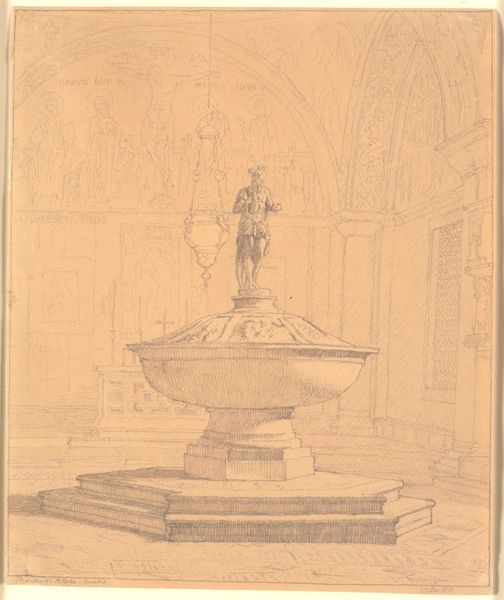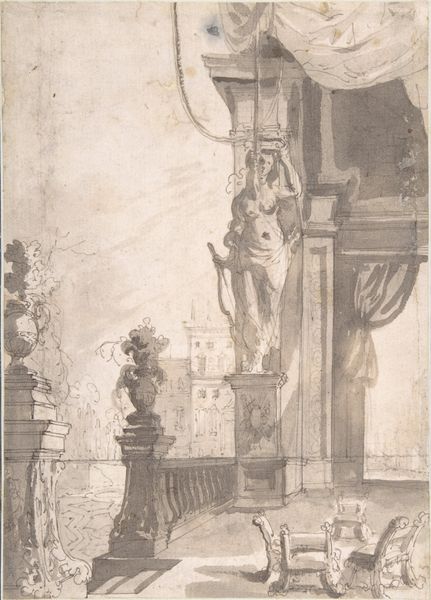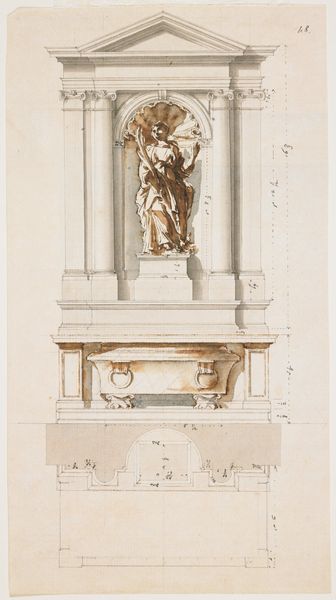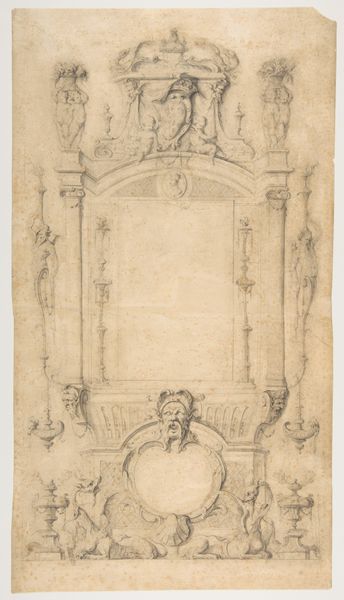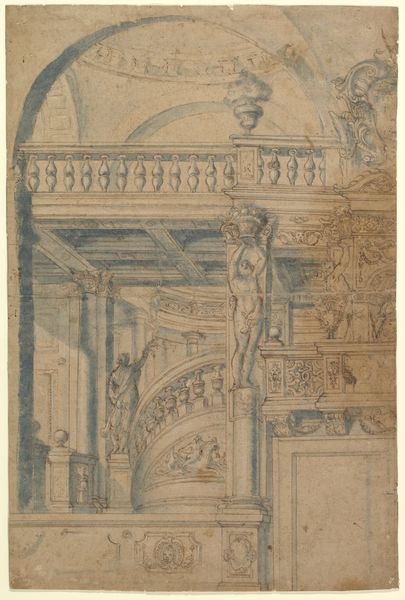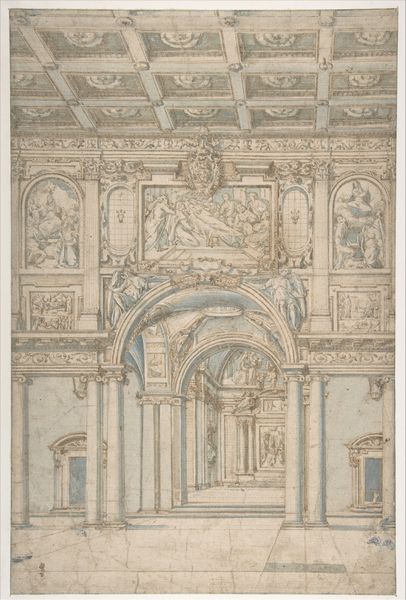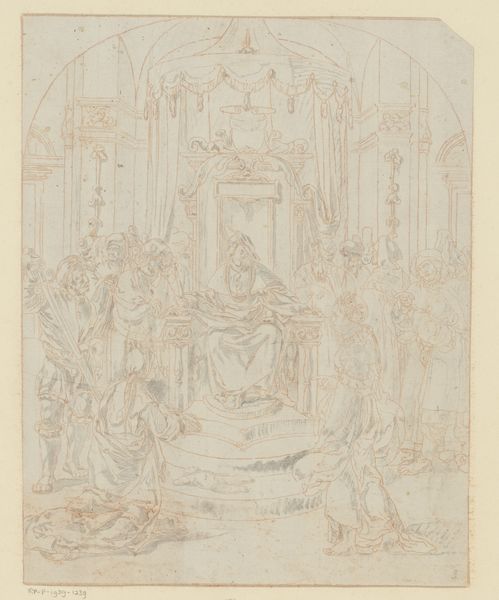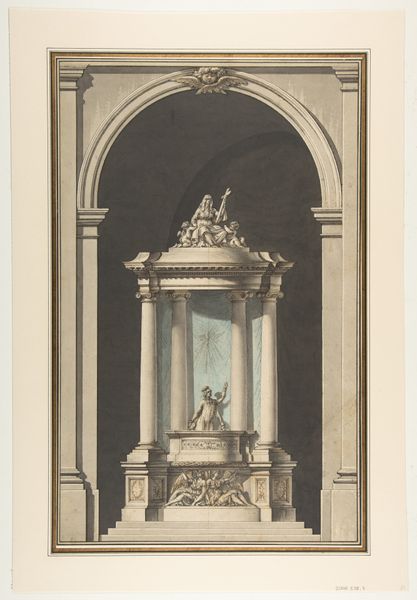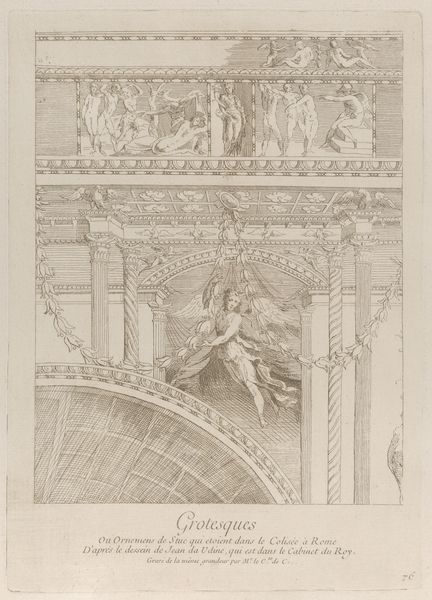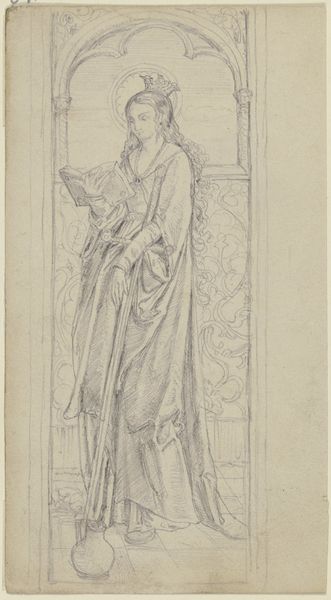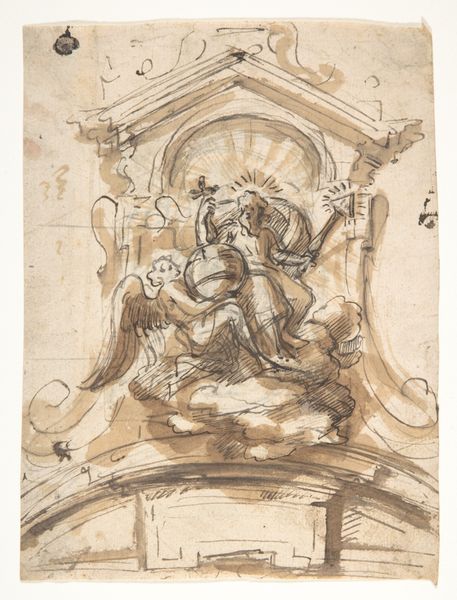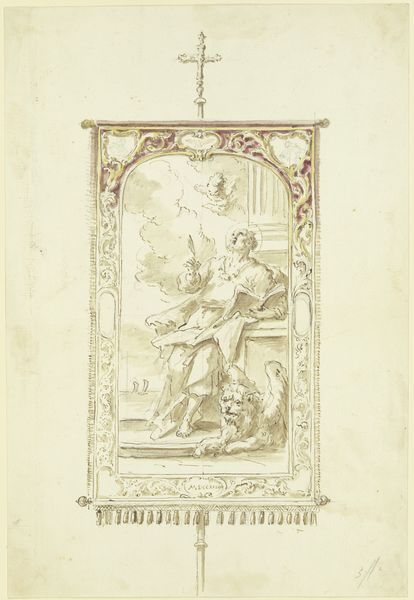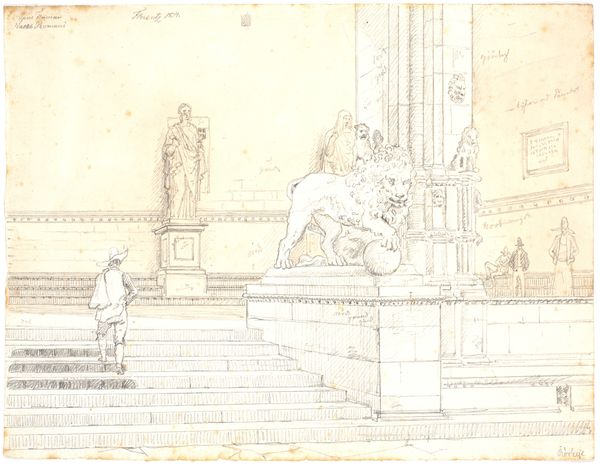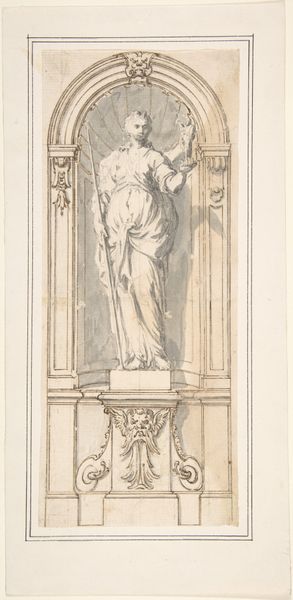
Rückenansicht des Herkules Farnese im Hof des Palazzo Farnese in Rom
0:00
0:00
drawing, pencil, chalk, architecture
#
drawing
#
baroque
#
figuration
#
pencil
#
chalk
#
architecture
Copyright: Public Domain
This drawing of the Farnese Hercules was made by Annibale Carracci, likely in the late 16th century, using a humble piece of graphite on paper. The softness of the graphite allows Carracci to capture the play of light across the Hercules’s formidable physique. Notice the layering of strokes, building up the darker areas of shadow, and the more sketch-like, spare handling of the surrounding architecture of the Palazzo Farnese in Rome. This wasn't just a technical exercise. The Hercules was itself a potent symbol. Discovered in Rome in the 16th century, it was celebrated as a relic of antiquity, and a physical ideal. In rendering the statue, Carracci engages with the artistic tradition of drawing from life. This emphasizes careful observation and skillful execution, yet it also suggests a social context: the studio, where artists honed their craft, exchanged ideas, and made a living through their labor. It is the amount of work, and the skills of the hand, that bring the Hercules to life.
Comments
No comments
Be the first to comment and join the conversation on the ultimate creative platform.
